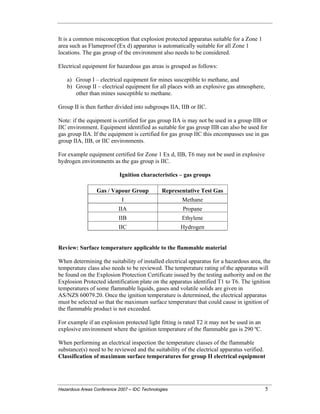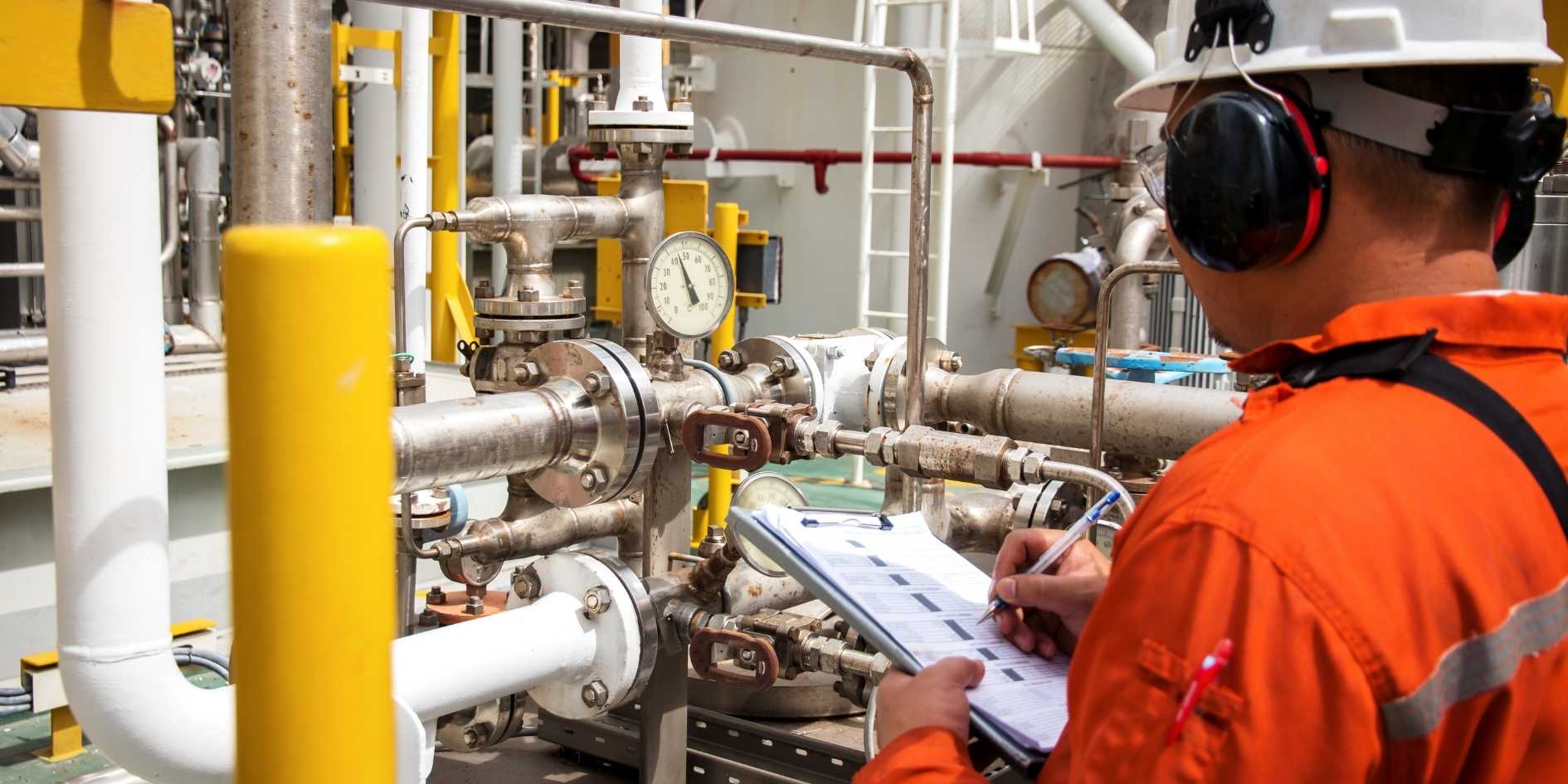About Roar Solutions
About Roar Solutions
Blog Article
The smart Trick of Roar Solutions That Nobody is Talking About
Table of ContentsSome Known Details About Roar Solutions Some Ideas on Roar Solutions You Need To KnowThe Best Strategy To Use For Roar Solutions
In order to secure installations from a prospective surge a technique of analysing and classifying a possibly harmful area is required. The function of this is to guarantee the proper choice and installation of tools to ultimately protect against an explosion and to ensure safety and security of life.
(https://www.magcloud.com/user/roarsolutions)
No tools ought to be mounted where the surface area temperature of the devices is better than the ignition temperature level of the given risk. Below are some usual dust dangerous and their minimal ignition temperature level. Coal Dirt 380C 225C Polythene 420C (melts) Methyl Cellulose 420C 320C Starch 460C 435C Flour 490C 340C Sugar 490C 460C Grain Dust 510C 300C Phenolic Resin 530C > 450C Aluminium 590C > 450C PVC 700C > 450C Soot 810C 570C The chance of the hazard existing in a focus high sufficient to cause an ignition will certainly vary from area to place.
In order to identify this risk an installment is split right into areas of risk relying on the quantity of time the harmful is existing. These areas are referred to as Areas. For gases and vapours and dirts and fibers there are three zones. Zone 0 Area 20 A hazardous ambience is very likely to be existing and might exist for extended periods of time (> 1000 hours per year) or also continually Area 1 Zone 21 A harmful environment is feasible however not likely to be present for extended periods of time (> 10 450 C [842 F] A category of T6 suggests the minimal ignition temperature is > 85 C [185 F] Harmful location electrical equipment maybe developed for usage in higher ambient temperature levels. This would certainly indicated on the ranking plate e.g. EExe II C T3 Ta + 60C( This means at 60C ambient T3 will certainly not be surpassed) T1 T1, T2, T3, T4, T5, T6 T2 T2, T3, T4, T5, T6 T3 T3, T4, T5, T6 T4 T4, T5, T6 T5 T5, T6 T6 T6 A T Class ranking of T1 indicates the maximum surface area temperature produced by the tool at 40 C is 450 C. Presuming the associated T Class and Temperature level score for the tools are proper for the area, you can constantly utilize a tool with a much more rigorous Division ranking than required for the location. There isn't a clear answer to this inquiry. It really does rely on the kind of devices and what repair services need to be brought out. Equipment with details examination procedures that can not be performed in the area in order to achieve/maintain 3rd party rating. Have to come back to the manufacturing facility if it is prior to the equipment's solution. Area Repair Work By Authorised Worker: Complicated testing may not be needed nonetheless specific procedures may require to be adhered to in order for the equipment to maintain its third celebration score. Authorized personnel must be employed to carry out the work properly Repair service have to be a like for like replacement. New component must be thought about as a straight substitute needing no unique screening of the devices after the fixing is full. Each tool with a hazardous rating ought to be assessed individually. These are laid out at a high degree listed below, however, for more detailed information, please refer directly to the standards.
Unknown Facts About Roar Solutions
The equipment register is a comprehensive data source of equipment documents that includes a minimum collection of fields to identify each thing's location, technological specifications, Ex-spouse classification, age, and ecological data. This details is critical for tracking and taking care of the equipment properly within dangerous locations. On the other hand, for regular or RBI tasting assessments, the quality will be a mix of Detailed and Close assessments. The proportion of In-depth to Shut evaluations will certainly be determined by the Tools Threat, which is examined based on ignition danger (the possibility of a source of ignition versus the chance of a flammable environment )and the unsafe area classification
( Area 0, 1, or 2). This variant will also influence the resourcing needs for job preparation. Once Great deals are specified, you can develop sampling strategies based upon the sample size of each Great deal, which describes the number of arbitrary devices items to be inspected. To establish the called for example size, 2 aspects need to be reviewed: the dimension of the Whole lot and the category of assessment, which shows the degree of initiative that ought to be applied( decreased, typical, or boosted )to the examination of the Whole lot. By incorporating the classification of examination with the Great deal dimension, you can after that establish the appropriate being rejected requirements for a sample, indicating the permitted number of defective items found within that sample. For even more information on this procedure, please describe the Power Institute Standards. The IEC 60079 basic recommends that the optimum period in between examinations need to not surpass three years. EEHA evaluations will additionally be conducted beyond RBI projects as part of scheduled upkeep and devices overhauls or repair services. These evaluations can be credited towards the RBI example sizes within the affected Whole lots. EEHA examinations are conducted to recognize mistakes in electric equipment. A heavy racking up system is important, as a single tool might have numerous faults, each with differing degrees of ignition risk. If the mixed score of both inspections is much less than twice the mistake score, the Great deal is deemed appropriate. If the Great deal is still taken into consideration unacceptable, it needs to undergo a complete assessment or justification, which might set off more stringent evaluation methods. Accepted Great deal: The reasons of any type of mistakes are identified. If a typical failing mode is discovered, added equipment might require assessment and repair work. Mistakes are identified by seriousness( Safety and security, Integrity, House cleaning ), ensuring that immediate concerns are assessed and dealt with quickly to minimize any type of influence on security or operations. The EEHA data source need to track and videotape the lifecycle of faults in addition to the corrective actions taken. Carrying out a durable Risk-Based Inspection( RBI )technique is important for making certain conformity and safety in handling Electrical Devices in Hazardous Locations( EEHA) (eeha training). Automated Mistake Rating and Lifecycle Monitoring: Easily take care of mistakes and track their lifecycle to boost inspection accuracy. The introduction of this support for risk-based evaluation additionally reinforces Inspectivity's position as a best-in-class solution for regulatory compliance, in addition to for any kind of asset-centric inspection use situation. If you want finding out more, we welcome you to ask for a demonstration and find exactly how our solution can change your EEHA management procedures.
Our Roar Solutions Diaries

In terms of eruptive threat, a hazardous area is a setting in which an eruptive environment is present (or may be anticipated to be present) in amounts that call for special safety measures for the building and construction, installment and use equipment. electrical refresher course. In this post we discover the obstacles dealt with in the office, the danger control actions, and the needed expertises to function securely
It is a repercussion of modern life that we make, keep or deal with a variety of gases or fluids that are considered combustible, and a variety of dusts that are considered combustible. These compounds can, in particular conditions, form eruptive ambiences and these can have significant and tragic consequences. The majority of us are familiar with the fire triangular eliminate any type of one of the three elements and the fire can not happen, yet what does this mean in the context of dangerous areas? When breaking this down into its simplest terms it is basically: a mix of a specific amount of release or leak of a certain substance or product, blending with ambient navigate to these guys oxygen, and the existence of a source of ignition.
In a lot of circumstances, we can do little concerning the degrees of oxygen in the air, however we can have significant impact on resources of ignition, for example electric tools. Unsafe locations are documented on the hazardous area classification drawing and are determined on-site by the triangular "EX LOVER" indication. Below, among various other key information, zones are split right into 3 kinds relying on the danger, the possibility and duration that an explosive environment will exist; Zone 0 or 20 is regarded one of the most unsafe and Area 2 or 22 is considered the least.
Report this page